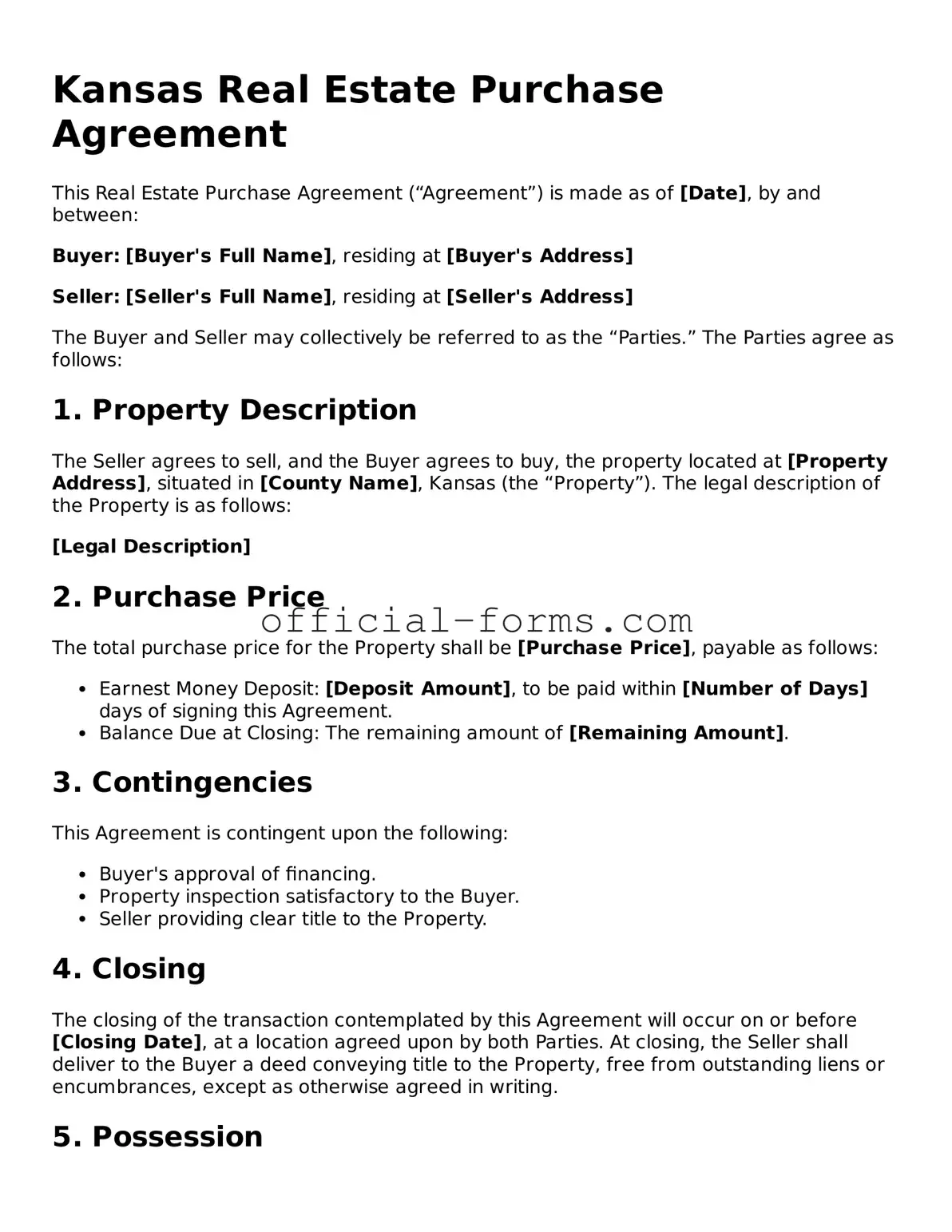Filling out the Kansas Real Estate Purchase Agreement can be a complex task, and many people make mistakes that could lead to complications later on. One common error is failing to include the correct legal description of the property. This description is crucial as it identifies the exact location and boundaries of the property being sold. Without this information, it may be difficult to enforce the agreement or resolve disputes.
Another mistake often seen is neglecting to specify the purchase price clearly. While it may seem straightforward, ambiguity in the price can lead to misunderstandings between the buyer and seller. It’s essential to write the price both in numbers and words to eliminate any confusion.
People frequently overlook the importance of including all necessary contingencies. Contingencies are conditions that must be met for the agreement to be valid. Common examples include financing, inspections, and appraisal contingencies. Omitting these can leave one party vulnerable if the conditions aren’t met.
Additionally, many individuals fail to provide accurate information about the earnest money deposit. This deposit shows the buyer's commitment and can be a significant amount. If the amount is incorrect or if the terms regarding its return are vague, it could lead to disputes later.
Another common error is not including a timeline for the closing date. A clear timeline helps both parties understand when the transaction will be finalized. Without this, it may lead to delays or disagreements about when the obligations are to be fulfilled.
People also sometimes forget to include their contact information. This may seem minor, but having accurate contact details ensures that all parties can communicate effectively throughout the process. Missing this information can cause unnecessary delays in communication.
Lastly, failing to sign and date the agreement is a critical mistake. An unsigned agreement is not legally binding, which means that neither party is obligated to fulfill their promises. Both parties should ensure that they sign and date the document in the appropriate places.
Taking the time to carefully review each section of the Kansas Real Estate Purchase Agreement can help prevent these mistakes. Being thorough and precise in filling out the form will facilitate a smoother transaction and protect the interests of everyone involved.
